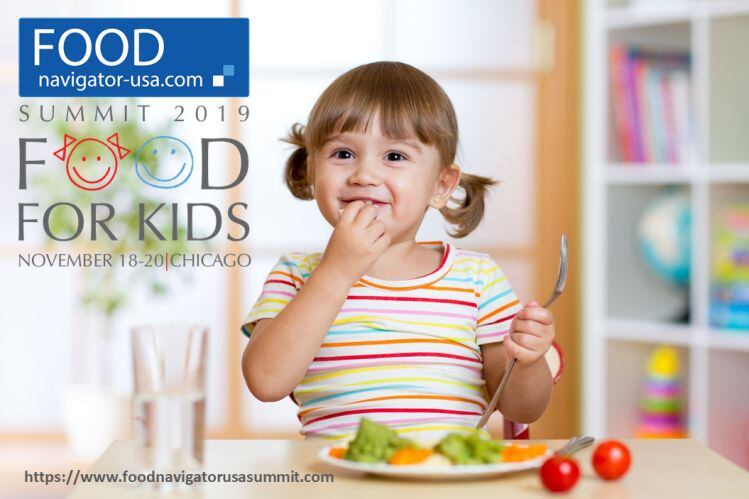CSPI analyzed 12 kids TV channels (in six hour periods per channel) and found that 23% of all the ads during the six hour periods observed were for foods or beverages, up from 14% in 2012. Restaurants were the top category of food and drink advertised to kids (35%), followed by candy (22%), breakfast cereals (12%), beverages (10%), and snack foods (6%), according to the Center for Science in the Public Interest (CSPI) report.
The number of food and beverage advertisements that failed to meet the CFBAI Uniform Nutrition Criteria increased by over 50% -- from an average of 13 to 20 per six-hour sample.
The percentage of food and beverage advertisements for unhealthy products was relatively unchanged. Virtually all (99% in 2018 and 96% in 2012) of food and beverage advertisements during children’s programming were for unhealthy foods and beverages, as measured against the expert IWG nutrition standards.
CSPI found that the most common reasons that foods or beverage failed to meet the CFBAI and IWG standard in 2018 were that they did not contain healthful components such as fruits, vegetables, or whole grains or were too high in sugar.
In 2018, fewer food and beverage advertisements failed to meet CFBAI and IGW standards for saturated fat and sodium compared to 2012. However, more advertisements failed to meet the IWG sugar and healthful components standards over that time period.
After the completion of the analysis for this report, the CFBAI announced updated Uniform Nutrition Criteria that will take effect in 2020.
There has been a series of efforts over the years to reform policies of marketing unhealthy food and drink products to children:
- 2006: The Children’s Food and Beverage Advertising Initiative (CFBAI), a self-regulatory program administered by the Council of Better Business Bureaus (BBB), was developed to improve food and beverage advertising to children younger than 12 years of age.
- 2009: Congress required multiple federal agencies to form the Interagency Working Group (IWG) on Food Marketed to Children to develop model voluntary recommendations for food and beverage marketing to children.
- 2013: The CFBAI implemented Uniform Nutrition Criteria, specifying amounts for “Nutrients to Limit” (calories, saturated fat, trans fat, sodium, and total sugars), as well as “Nutrition Components to Encourage” (fruits, vegetables, dairy, whole grains, vitamins, and minerals).
- 2016: The BBB and the National Confectioners Association established a similar initiative to the CFBAI for candy companies, the Children’s Confection Advertising Initiative (CCAI). Eighteen major companies participate in CFBAI, and nine candy companies belong to CCAI.
Nickelodeon in the hot seat, says CSPI
Half of the 18 channels assessed including While Cartoon Network, Discovery Family (previously Hub), Nick Jr., Nickelodeon, and Universal Kids (previously Sprout) received Ds or Fs, airing more unhealthy food and beverage advertisements in 2018 compared to 2012.
PBS and Univision received top marks receiving As for airing no food and beverage advertisements, followed by The Disney channels and Nick Jr. which received Bs for airing some unhealthy food and beverage advertising.
“We found that for every hour a kid spends in front of Nicktoons or Nickelodeon, she or he is exposed to 10 ads for unhealthy food,” said CSPI vice president for nutrition Margo G. Wootan.
“And of all the players involved with marketing food to children, Nickelodeon and its parent company, Viacom, have been among the most stubborn and resistant to change. Many channels need changing but, given its large viewership and dismal results, Nickelodeon needs to change the most.”
Parents, CPG brands, entertainment companies, who’s responsible?
CSPI views feeding children healthy foods and beverages as a shared responsibility between parents, food companies, and entertainment companies.
However, advertisements oftentimes undermine parents’ ability to guide their food and beverage choices, noted CSPI.
“Many food and entertainment companies position marketing to children as a matter of parental responsibility, suggesting that parents should ‘just say no’ to their children’s requests for unhealthy items. Yet, the intent of food and beverage marketing is to persuade,” wrote CSPI in its report.
“Food and beverage advertisements induce children to pester their parents to purchase marketed products. One food company reported that 75% of parents bought a food product for the first time because their child requested it.”
It can also put a strain on parent-child relationships as it repeatedly puts parents in a tiring position of negotiation over food.
“The ubiquitous and unavoidable chorus of food messaging shapes social norms, children’s food preferences, and, ultimately, their health,” CSPI continued.
CSPI Recommendations
CSPI recommends that media companies stop accepting ads for products that can harm their young viewers’ health and well-being, and that they adopt strong policies to address the healthfulness of foods and beverages marketed on their platforms.
The CFBAI, the self-regulatory program, should further strengthen its updated nutrition standards, especially by encouraging the inclusion of healthful food components such as fruits, vegetables, and whole grains, which were the areas ads most commonly failed to meet.
CSPI also noted that the CFBAI would be more useful if it covered children aged 14 and younger as opposed to 11 and younger, and if it covered all forms of food marketing to children, including on-package, in-store, and all school-based marketing, as well as marketing based on toys and other premiums.
How can stakeholders across the kids' food and beverage industry work together to improve the diets' of kids? We'll be digging into this topic in depth during FoodNavigator-USA's FOOD FOR KIDS summit taking place Nov. 18-20 in Chicago. Join us for three days packed with exclusive content and insights from industry thought leaders including Chobani president, Peter Guinness; Head of SnackFutures at Mondelez, Brigitte Wolf; and Emily Kimmins, Senior Manager of Sensory and Consumer Science, Kraft Heinz. REGISTER HERE.




